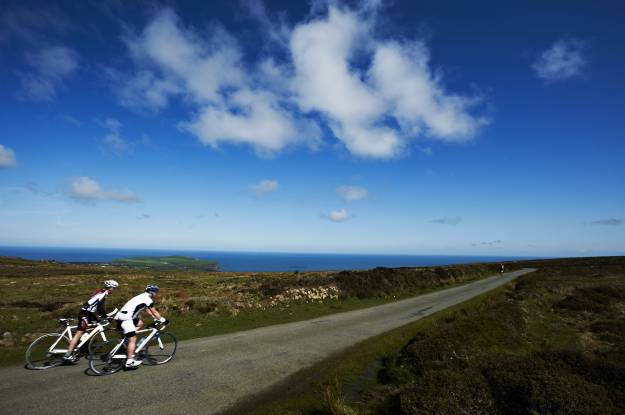
Is the change to your normal working routine making you think about riding for the first time or making you think about getting back on your bike for the first time in a few years?
Now more than ever it is important that we look after our physical and mental health. Provided that you do so following government guidelines, what better way to exercise than to get out on your bike to get your daily allowance of exercise?
Below are some tips to get you on your way.
What should I wear?
You should wear whatever feels comfortable for you and allows freedom of movement whilst on the bike. Whilst there is no need for beginners to go squeezing themselves into full lycra kit, it is still recommended that your clothes are fairly tight fitting to prevent your trousers catching on your chain. If you find that you get a little saddle sore after your first ride, investing in some padded cycling shorts is probably a priority. While there is no legal requirement for you to wear a helmet, we actively encourage you to do so for your own safety.
How to put a helmet on correctly – video by Joe Beckingsale, Wales Racing Academy.
We actively encourage people to wear a helmet for your own safety. One of our Wales Racing Academy riders Joe Beckingsale has demonstrated how to put on a helmet correctly in this easy-to-follow video.
The Helmet used in the video is the Limar Air Speed from our Official Helmet Partners, Limar who have produced this super Welsh inspired helmet. You can get yours today with a 20% discount using the code ‘WELSHCYCLING20’ by clicking here.
Find safe routes that are close to home
While you are legally permitted to cycle on all roads apart from motorways, it is advised that you should stick to quieter roads or cycle paths if you’re just starting out, now is not the time to be exploring potentially tricky and difficult terrain. In our current climate, you should never be too far away from home under Government guidelines, but this is recommended for beginners regardless, in case of emergency.
To read more about #RideResponsibly please click here.
What happens if I get a puncture?
In line with current Government guidelines, you shouldn’t ever be too far from home but it is always a good idea to carry an appropriate puncture kit to save you from having to walk back to your home. It’s important that you understand and know how to fix a puncture before setting off on your bike ride – one trick would be to practice changing a tyre before you go out on a bike ride.
Here are two good videos to watch around fixing a puncture:
Emergency contact
It is always advised that you let someone know that, firstly, you are going for a ride, and, secondly, where it is that you are going for your ride. This is necessary in case you find yourself with a puncture, or are too tired, or you are just a later home than you originally expected. Use your personal breakdown service instead of putting additional pressure on emergency services during these times.
Click here to see information about an exciting partner which has an app which can help keep you safe whilst cycling. Some exciting news to come later in the summer.
Don’t do too much too soon
It’s easy to get carried away with ambition, but don’t jump in feet first. Be realistic with your goals and build your riding up gradually, ensuring that you rest adequately in between. By increasing your volume of exercise and intensity at a sensible rate, that will ensure that you are able to maintain the effectiveness of your immune system and that it does not become compromised – see link: [medical advice webpage] for more details
Above all, it is most important that you #RideResponsibly during these unprecedented times to ensure that we are looking after ourselves – physically and mentally – without adding pressure to the already strained emergency services.
- Ride alone or in the company of those in your household.
- Ride in an area that you are familiar with, and is local to your home.
- Ride to your ability to ensure that you are not pushing yourself beyond limits, and inevitably reducing your immunity.
- Stopping to let others pass if you feel like you are beginning to breach the 2-metre distance law if you see other cyclists whilst on your ride.






